Introduction:
Universal design in architecture is a revolutionary approach that transcends the conventional boundaries of design, creating spaces that are inclusive, accessible, and welcoming to people of all abilities and backgrounds. Originating from the idea of making environments universally usable, this design philosophy aims to cater to the diverse needs of individuals, fostering a sense of equality and independence. In this blog, Exploring the Essence of Universal Design in Architecture, we delve into the principles, benefits, and real-world applications.
Understanding Universal Design:
Universal design, often referred to as “design for all” is a philosophy that seeks to create environments, products, and systems that are usable by the widest range of people, regardless of age, ability, or status. In the context of architecture, this means going beyond traditional design norms to ensure that buildings and spaces are accessible, functional, and aesthetically pleasing for everyone.

Key Principles of Universal Design in Architecture:
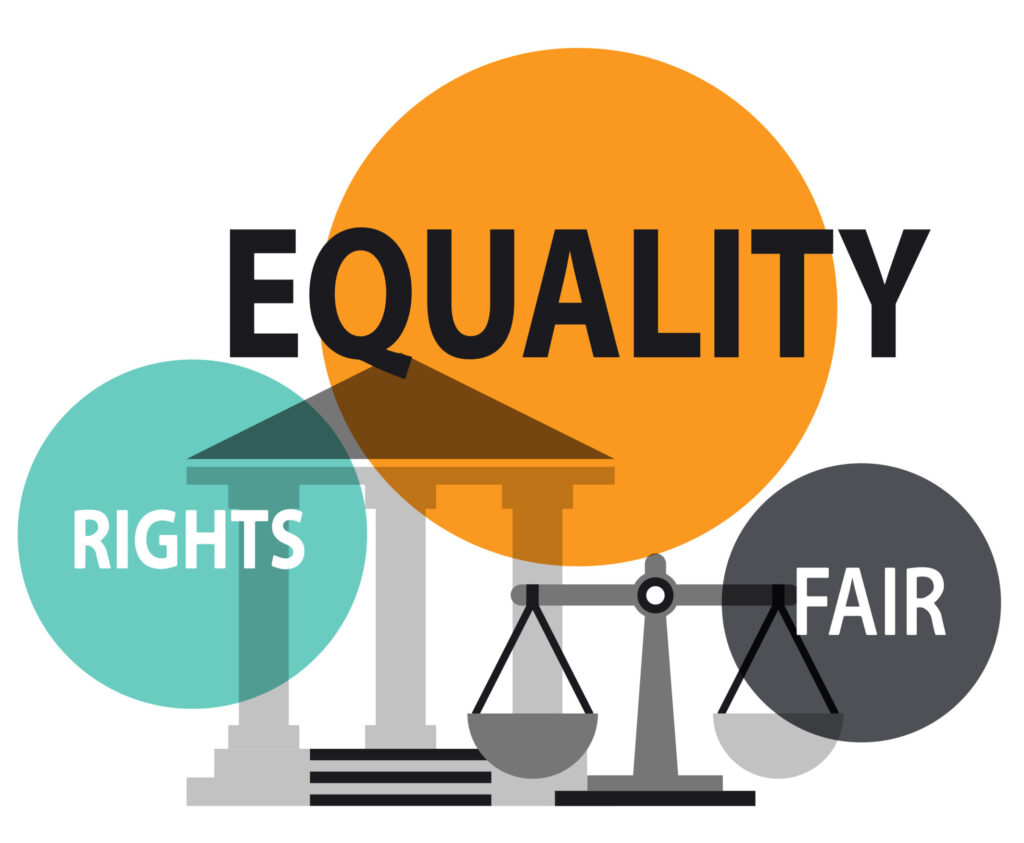
Equitable Use:
Universal design promotes equitable use by designing spaces and features that are useful and appealing to people with diverse abilities. This principle emphasizes creating designs that serve all users equally, without the need for adaptation or specialized design.

Flexibility in Use:
The concept of flexibility in use encourages architects to design spaces that can accommodate a wide range of preferences and abilities. This may involve providing multiple ways to accomplish tasks or designing adjustable elements that cater to individual needs.

Simple and Intuitive Use:
Universal design aims for simplicity and intuitiveness. Spaces should be designed in a way that is easily understandable and navigable by all users, regardless of their background or familiarity with the environment.

Perceptible Information:
Ensuring that information is presented in multiple ways caters to users with different sensory abilities. This could involve incorporating visual, auditory, and tactile cues to convey information effectively.

Tolerance for Error:
Recognizing that everyone makes mistakes, tolerance for error in universal design means creating environments where errors are minimized, and the consequences of those errors are not severe. This principle is particularly important in spaces where safety is a concern.

Low Physical Effort:
Universal design strives to reduce physical effort by creating spaces that are comfortable and easy to use. This includes designing elements such as doors, switches, and controls to require minimal physical effort.
Real-world Applications and Benefits: Exploring the essence of Universal Design in Architecture
Accessible Architecture:
Universal design is evident in the creation of accessible architecture, with features like ramps, elevators, and wide doorways that cater to individuals with mobility challenges. Such design elements not only meet legal requirements but also contribute to a more inclusive built environment.
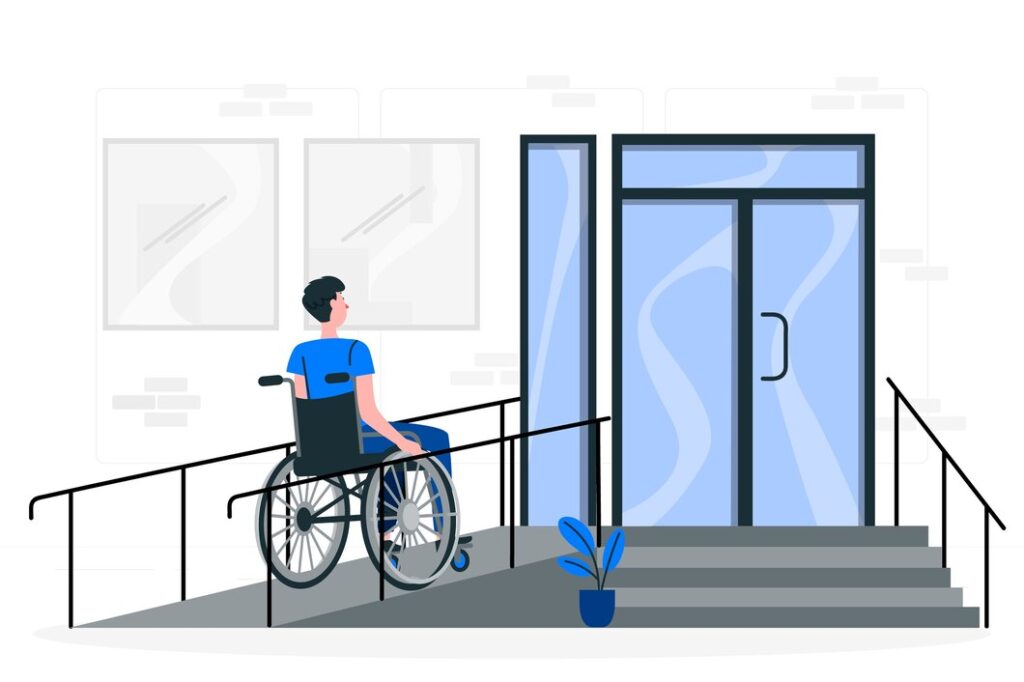
Inclusive Public Spaces:
Public spaces designed with universal principles in mind become inclusive hubs for social interaction. Parks, plazas, and recreational areas can be enjoyed by individuals of all ages and abilities, fostering community engagement and a sense of belonging.

Residential Design:
Universal design is transforming the way homes are built, with architects integrating features such as step-free entrances, wider hallways, and adaptable spaces. These considerations ensure that homes are suitable for residents of all ages and abilities, promoting longevity in occupancy.

Workplace Inclusivity:
In the workplace, universal design promotes an inclusive environment that accommodates employees with diverse needs. This includes designing workstations, restrooms, and common areas to be accessible and comfortable for everyone.

Cultural and Educational Institutions:
Cultural and educational institutions are adopting universal design principles to make exhibits, classrooms, and facilities accessible to a broad audience. This approach ensures that everyone can participate in cultural and educational experiences without barriers.
Universal design is evident in various aspects of our daily lives, from architecture and public spaces to products and digital interfaces. Here are some examples that illustrate the principles of universal design:
Curb Ramps:
Curb ramps provide a smooth transition between sidewalks and streets, making pedestrian pathways accessible to individuals using wheelchairs, strollers, or other mobility aids
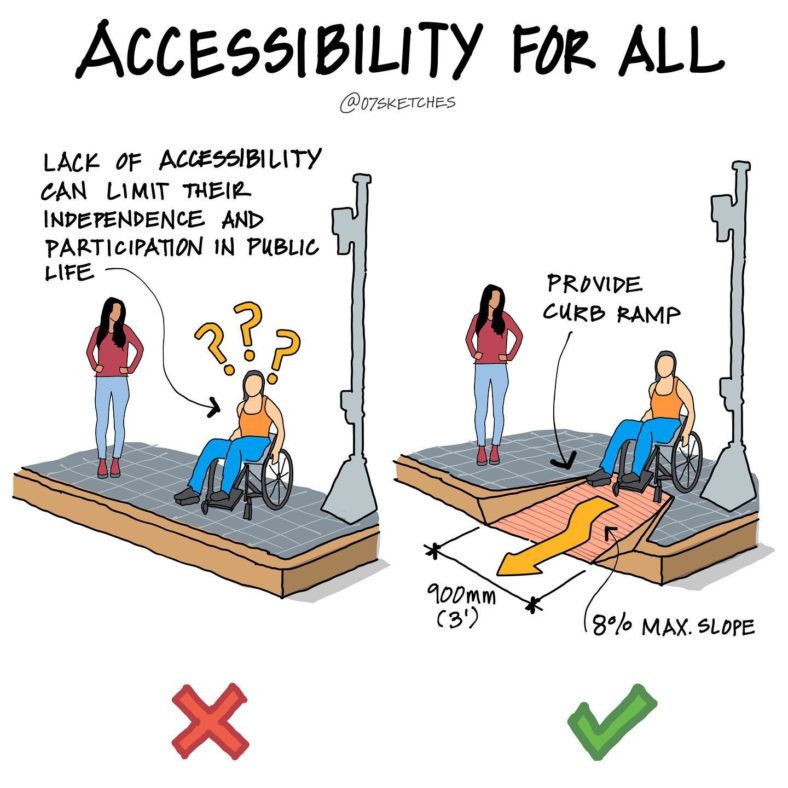
Credits: ARCH20
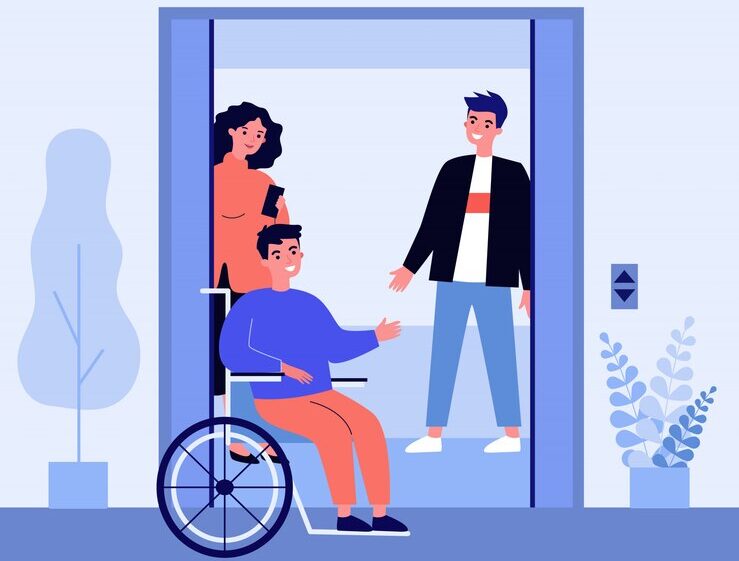
Automatic Doors:
Automatic doors equipped with sensors allow for hands-free entry, benefiting individuals with mobility challenges, parents with strollers, and people carrying heavy loads.
Elevators:
Elevators provide vertical mobility and are essential for individuals with mobility impairments. They also accommodate those with strollers, shopping carts, or temporary injuries.
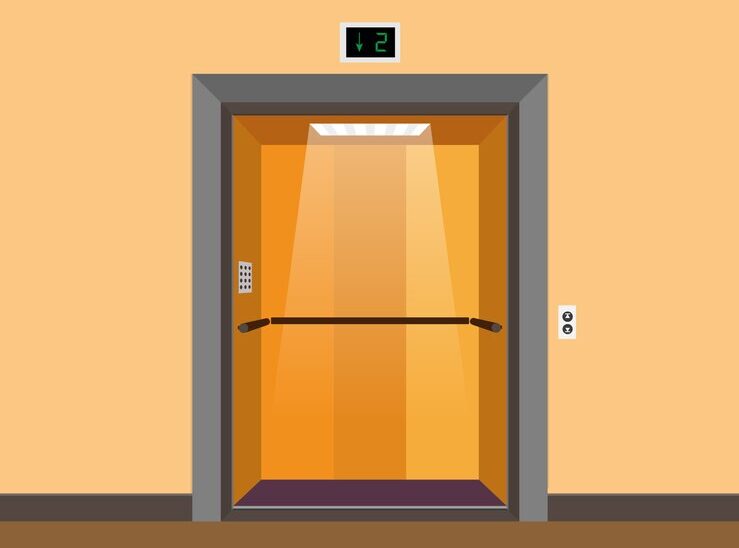
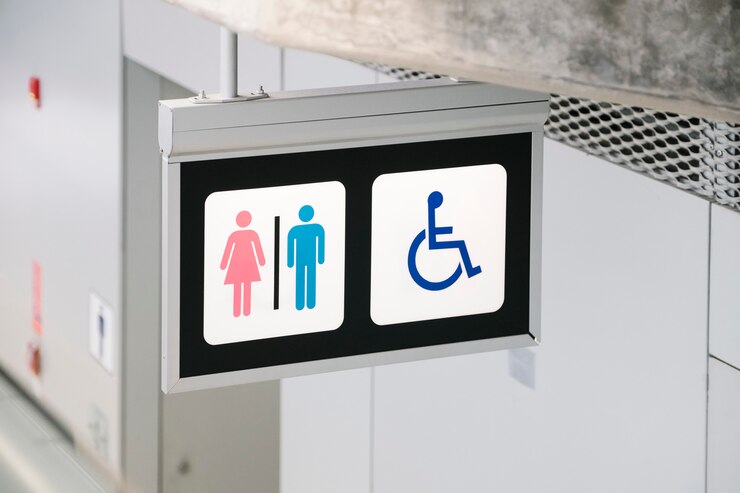
Accessible Restrooms:
Accessible restrooms are designed to accommodate individuals with varying abilities. Features may include grab bars, lowered sinks, and spacious layouts to allow wheelchair maneuverability.
Touch-Free Faucets:
Touch-free faucets in public restrooms reduce the physical effort required to turn on and off the water, benefiting users with limited dexterity and promoting hygiene.


Smartphones with Voice Assistants:
Smartphones with voice assistants (e.g., Siri, Google Assistant) provide auditory feedback and voice commands, making them accessible to individuals with visual impairments or those who prefer hands-free interaction.
Flexible Workspace Furniture:
Adjustable and modular office furniture allows users to customize their workspace according to individual preferences and needs, promoting ergonomic and comfortable work environments.
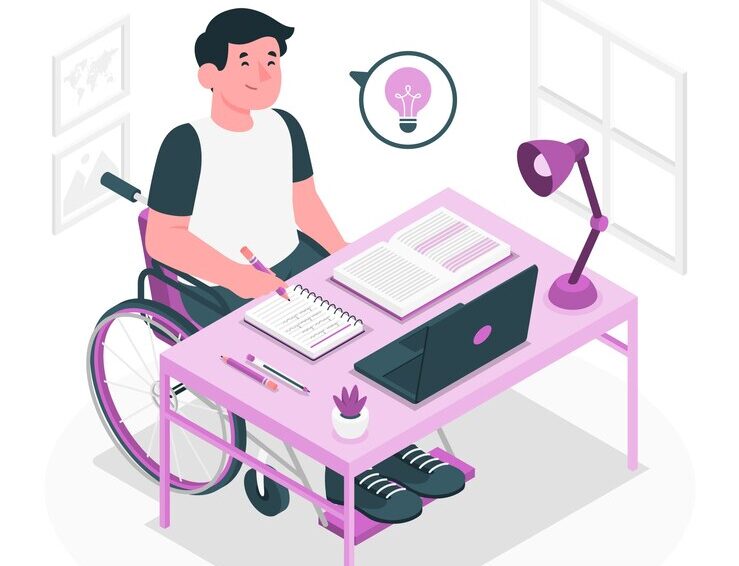
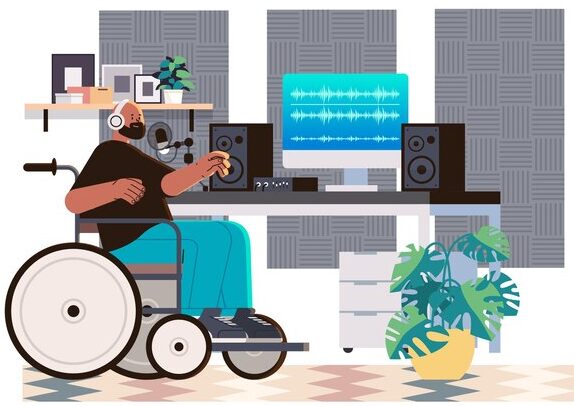
Closed Captioning on TV and Online Videos:
Closed captioning provides text-based subtitles for audio content, making it accessible to individuals with hearing impairments and allowing users to consume content in noisy environments.
Accessible Websites:
Websites with clear navigation, alt text for images, and compatibility with screen readers ensure an inclusive online experience for users with varying levels of digital literacy and abilities.

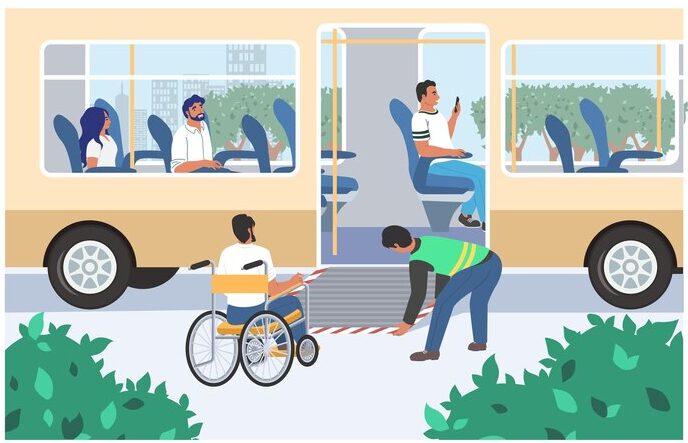
Low-floor Buses:
Low-floor buses have lower entry points, making boarding and exiting easier for individuals with mobility challenges, parents with strollers, and older adults.
Multi-sensory Traffic Signals:
Traffic signals with audible cues or tactile indicators (e.g., vibrating surfaces) assist pedestrians with visual or hearing impairments in navigating road crossings safely.
These examples demonstrate how universal design principles can be applied across various domains to create environments and products that are accessible, user-friendly, and beneficial to a diverse range of individuals.

Conclusion: Exploring the essence of Universal Design in Architecture
Universal Design in architecture isn’t just about meeting accessibility standards; it’s about fostering inclusivity and enhancing the human experience for everyone. By embracing principles that prioritize ease of use, safety, and enjoyment for all individuals, architects and designers can create spaces that not only meet the diverse needs of society but also promote a sense of belonging and dignity. As we move towards a future where inclusivity is paramount and Universal Design stands as a cornerstone in the creation of built environments that truly serve the common good, ensuring that everyone, regardless of ability, can live, work, and thrive in harmony
I hope you liked this blog Exploring the Essence of Universal Design in Architecture, please let me know through your comments. Also share it with other people who are passionate about architecture and design. Contact us in case of any queries and also read my previous blogs related to architecture and travel. Thank you.








